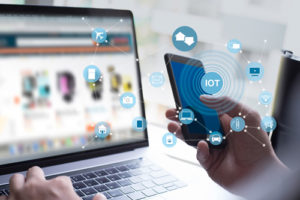As schools and higher education institutions across the U.S. prepare to begin their fall semester, those that are offering fully in-person or hybrid experiences have been grappling with how to ensure the safety of students, faculty, and staff in the wake of the COVID-19 pandemic. As they think about what the fall semester – and beyond – should look like during an ongoing pandemic, technology–including IoT connectivity–has emerged as a potential answer to many of the issues they are facing.
Related content: How to secure IoT on campus
The IoT has emerged as a key solution for these institutions. IoT connectivity and solutions, when powered by a 0G network, offer a secure, reliable, and cost-effective option for higher-ed organizations as they work to create a safe campus – both during COVID-19 and beyond. Here are a few key examples of the many ways college campuses can leverage the IoT.
Contact tracing and emergency notifications
One of the most significant fears students, faculty, and staff face as they head back to campus is a COVID-19 outbreak. To quell these fears and ensure any infections are contained, many universities are looking to the IoT to help them improve campus contact tracing and emergency notification systems.
The IoT makes this easy by upgrading campus ID cards – which students, faculty and staff are already used to carrying around on a daily basis – and turning them into contact tracing devices. By equipping each person on campus with an IoT-enabled tracker with an NFC tag, campus personnel can monitor how the university population is moving throughout campus. With this data at their fingertips, the school can quickly react in the case of an outbreak, guaranteeing those that are infected – or may have been infected – can quarantine and limit the spread of the infection, while also ensuring student privacy through anonymized data.
Beyond the COVID-19 use case, these trackers also enable institutions to upgrade their emergency notification systems. Today, many colleges and universities still rely on automated emails or text messages to inform the campus population of an emergency, meaning a person may miss the notification if they do not have their cell phone with them or access to their email. Because most universities require these ID cards-turned-trackers to enter buildings on campus, the likelihood that they would be inaccessible is slim, ensuring those on campus have immediate access to information about an emergency situation.
Ensuring social distancing
Social distancing has emerged as one of the most important aspects of controlling the COVID-19 pandemic. Because so much of college campuses are made up of shared spaces – dorm rooms, cafeterias, libraries – ensuring proper distancing can be difficult. IoT-enabled sensors can ease this process. By placing IoT-enabled sensors on tables and chairs in these common areas, campuses can alert people on campus when there are too many people congregating, ensuring compliance with distancing regulations. These sensors can also be used to help the facilities team prioritize cleaning and sanitation in well-trafficked areas.
Beyond ensuring social distancing guidelines are met, these sensors can help institutions make smarter use of shared spaces on campus. By leveraging the data collected by these sensors, universities have greater insight into workstation, conference room, and classroom utilization, enabling them to make informed decisions around expanding, reducing or reconfiguring these spaces to best meet the campus population’s needs. Trackers can also be used to control lighting and temperature in these spaces, ensuring the optimal environment when spaces are in use, while saving energy and reducing utility costs when they aren’t.
Empowering the automated campus
Keeping campus operations running smoothly is a complicated task, even without a pandemic to contend with. With IoT-enabled solutions, many of the daily tasks campuses require can be automated, helping campus personnel not only contain COVID-19, but also make the university smarter by providing critical insights into myriad activities on campus.
Sample use cases include:
• Tracking – Like any other large organization, campuses have significant amounts of equipment, which can be easy to lose track of. With IoT-enabled sensors, universities can easily keep track of these valuable assets with ease.
• Cold chain management – With most large campuses offering numerous dining options – cafeterias, cafés, and even convenience stores – keeping food stored safely and securely is a top priority. By leveraging IoT-enabled sensors, those responsible for managing campus food have the ability to keep a close eye on factors that can cause food to go bad – like temperature and humidity levels – ensuring any issues are resolved before there is a significant loss.
• Water and gas monitoring – Similar to the way IoT solutions help manage campus cold chains, these solutions can also help campuses automate their water and gas meter monitoring, providing unprecedented data into consumption, tampering and status and enabling smarter usage decisions.
• Parking – Traffic can be a significant problem on campuses, causing significant frustration. By equipping parking lots with IoT-enabled smart parking devices, campus personnel can track parking spot availability, minimizing this congestion.
• Pest control – On-campus pest control is a critical, but expensive, necessity. With IoT-enabled sensors, campus personnel can enhance trap visibility, reducing costs and improving efficiency while keeping campuses safe from bacteria, bedbugs, rodents and other pests.
IoT-enabled solutions empower safer, smarter campuses. With the unprecedented data and insight provided by these solutions, campus personnel can ensure a positive experience for students, faculty and staff alike – something that is more important now than ever before as the college experience is reshaped by COVID-19.
- Survey: More students want to go to graduate school - April 24, 2024
- Educause, AWS launch generative AI readiness assessment tool for higher ed - April 23, 2024
- A bungled FAFSA rollout threatens students’ college ambitions - April 19, 2024

